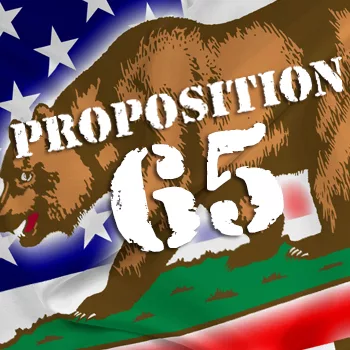Are Your Food Products in Compliance with the New Prop 65 Requirements?

New revisions to the warnings provisions required by California’s Prop 65 regulations took effect on August 30, 2018. If applicable, the revisions will change the way companies assess and label the food products they distribute or sell in California.
These new warning regulations fall under California’s Safe Drinking Water and Toxic Enforcement Act of 1986, referred to as Proposition 65. In order to manage the significant financial and business operation risks of noncompliance, the regulatory changes provide new “safe harbor” warning content and methods of transmission. In addition to new, more specific warning language, the changes require the identification of at least one of the chemicals from the Proposition 65 list that triggered the need to warn, unless a company wants to use a “short-form” option that merely states “cancer” or “reproductive harm” without an explanation for the warning. The requirements for transmission of this new warning language relate to all modes of purchase and distribution, including online/internet purchases as well as direct-import and drop-ship delivery.
The significant changes to Proposition 65’s warning requirements require an understanding of the chemical constituents of all products sold or distributed in the state of California. The Proposition 65 chemical list includes a wide range of naturally occurring chemicals (present in food) as well as synthetic chemicals including lead and phthalates.
The consequences of noncompliance with Proposition 65 arise primarily from private enforcer plaintiffs who are awarded 25 percent of any civil penalty and who partner with bounty hunter attorneys who collect reasonable attorney fees for the enforcement action. While the California’s Office of Environmental Health Hazard Assessment (OEHHA) facilitates the addition of new chemicals to the state’s list of carcinogens and reproductive toxicants (there are more than 900 chemicals on the list), anyone in the state can sue for enforcement under Proposition 65. This has led to an industry of those pursuing Proposition 65 enforcement actions for financial gain.
In addition to general content and transmission changes for consumer product, occupational and environmental chemical exposures, OEHHA adopted new safe harbor warning language for certain specific types of exposures including food exposure (including dietary supplements) and beverage and food exposure in restaurants. An example of a food exposure safe harbor warning under the new regulations is as follows:
WARNING: Consuming this product can expose you to chemicals including lead, which is known to the state of California to cause cancer and birth defects or other reproductive harm. For more information, go to www.P65Warnings.ca.gov/food.
The warning must be provided on the food product label (enclosed in a box) or on a product sign, label, or shelf tag. Depending on consumer information already on the food product, the warning may need to be transmitted in other languages as well.
Just recently, OEHHA proposed a regulatory exemption for Proposition 65-listed chemicals in coffee where the presence of the chemicals is the result of roasting or brewing coffee (primarily acrylamide). There was also a recent California Appellate Court ruling that found Proposition 65 cancer warnings for acrylamide in certain breakfast cereals was preempted by federal nutrition policies aimed at encouraging Americans to consume more whole grains as well as by U.S. Food and Drug Administration letters stating that any warnings should be deferred given the uncertain science on acrylamide in food risks to humans. This court ruling may expand the sphere of pre-emption protection in other contexts where state warning requirements should defer to more carefully articulated federal policies.
Ryan S. Landis, Esq., is a principal at Polsinelli. He has defended companies in litigation matters related to California’s Safe Drinking Water and Toxic Enforcement Act (Proposition 65) and Unfair Competition Law (17200) for more than 10 years.
Looking for quick answers on food safety topics?
Try Ask FSM, our new smart AI search tool.
Ask FSM →








